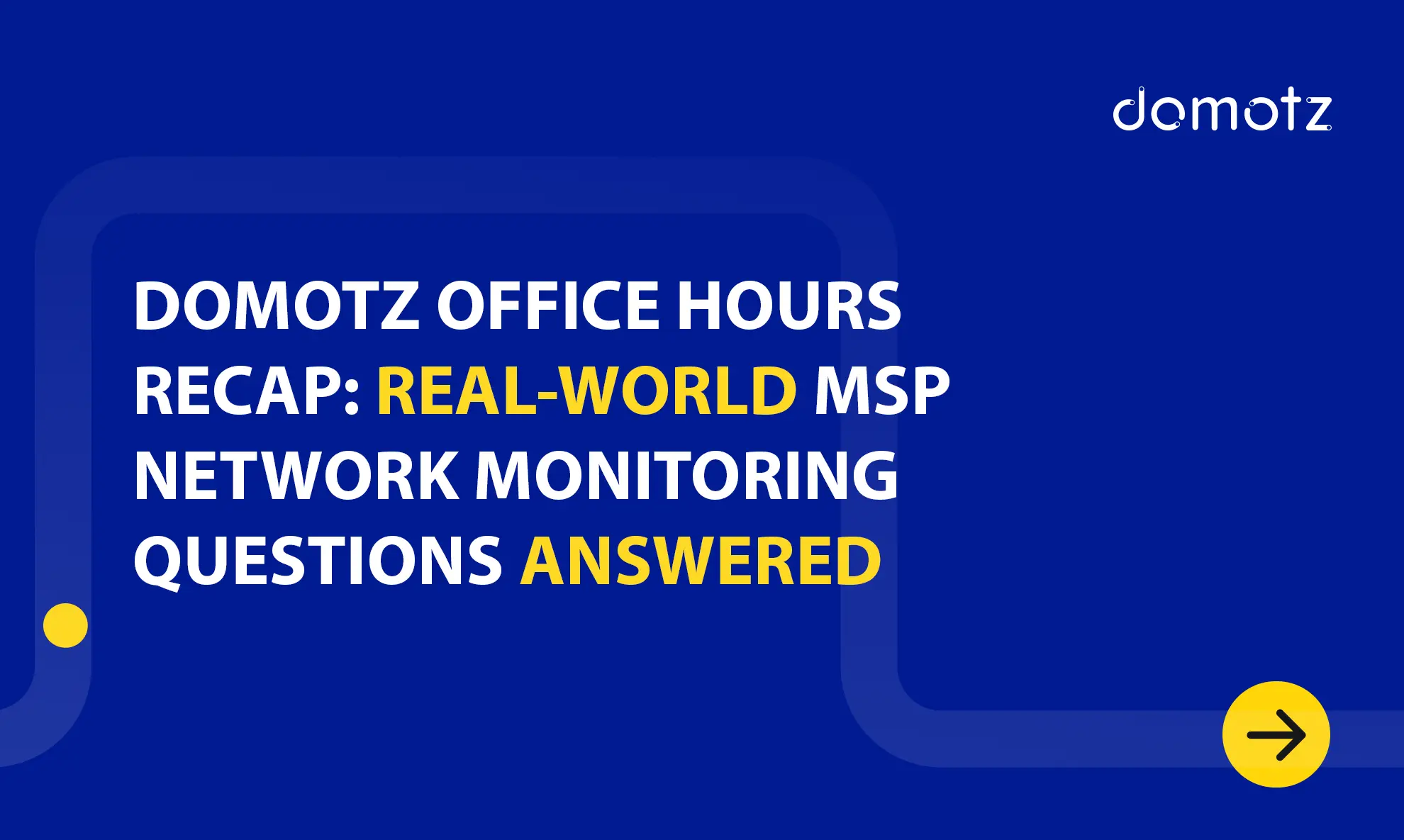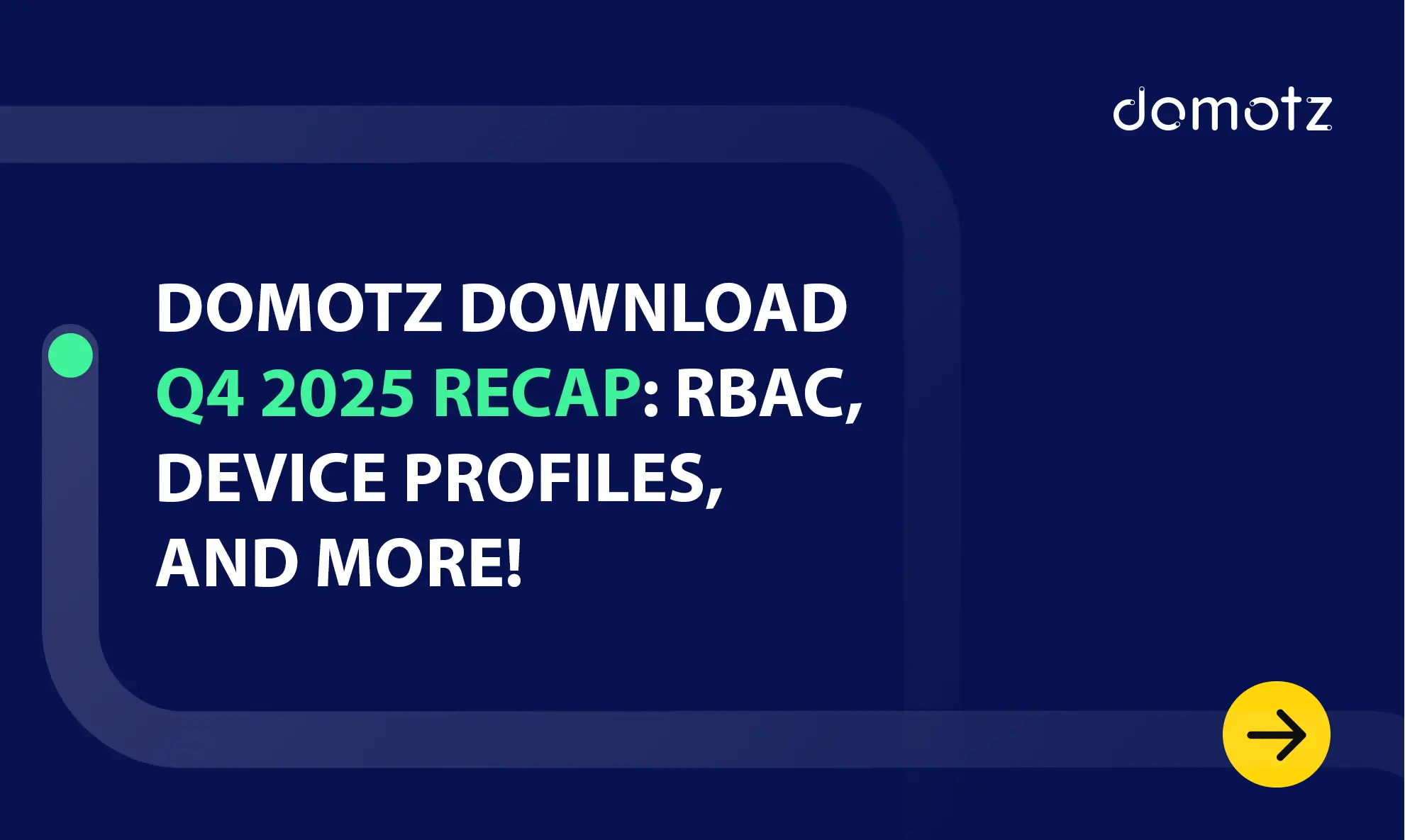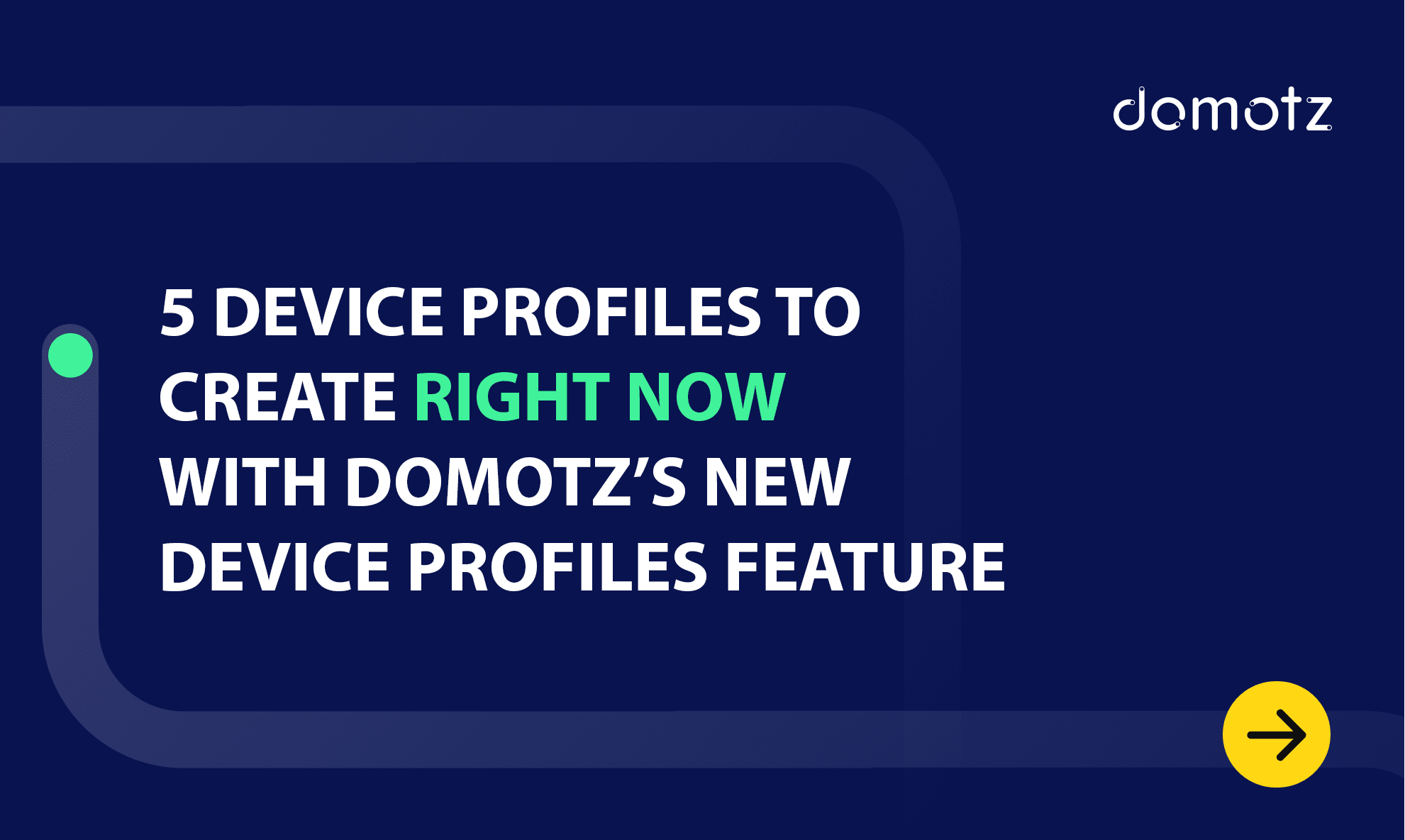Are you an MSP struggling to keep up with the exploding number of network devices your clients are deploying? You’re not alone. MSPs report that network complexity has increased by 40% since 2023, driven by hybrid work adoption, IoT proliferation, and cloud migration projects that never seem to end.
Here’s the uncomfortable truth most MSPs face: traditional network monitoring tools are too expensive to deploy across your entire client base. This forces you into an impossible choice: either monitor only your highest-paying clients (leaving service gaps that create liability) or deploy monitoring everywhere and watch your margins disappear.
The challenge isn’t just monitoring more devices. It’s doing it profitably while delivering consistent service quality across your entire client portfolio. With 44% of MSPs naming customer experience improvement as their top business priority, choosing the right network monitoring tool isn’t just a technical decision. It’s about eliminating the selective deployment trap that puts your business at risk.
This guide examines the best network monitoring solutions specifically for operationally mature MSPs who need to scale efficiently, maintain healthy margins, and most importantly, deploy monitoring across their entire client base without creating service tiers that put smaller clients at risk.
What Network Monitoring Means for MSPs in 2025
Network monitoring for MSPs isn’t just about uptime alerts anymore. It’s about solving the “selective deployment problem” that plagues the industry. Most monitoring tools force MSPs to choose which clients deserve proactive monitoring based on budget rather than need, creating dangerous service gaps.
Modern MSP network monitoring needs to deliver three critical outcomes:
- Universal Client Protection: Tools affordable enough to deploy across your entire client base, ensuring consistent service quality regardless of client size or contract value.
- Operational Efficiency: Solutions that reduce the time technicians spend swapping between applications (currently 31% of their day) and streamline troubleshooting workflows without requiring different tools for different clients.
- The best network monitoring tools for MSPs eliminate the impossible choice between profitability and comprehensive coverage. They combine comprehensive device discovery, intelligent alerting, and seamless integrations at price points that make universal deployment not just possible, but profitable.
Essential Features Modern MSPs Need
Today’s MSP network monitoring requirements go far beyond basic SNMP polling. More importantly, they must be deliverable at price points that don’t force you to create monitoring “haves and have-nots” among your clients:
- Affordable Universal Deployment: Pricing models that make monitoring every client network economically viable, not just profitable accounts
- Free Discovery Capabilities: Tools that let you audit and understand client networks without per-device charges eating into margins
- Multi-client Environment Management: Isolated monitoring domains with role-based access that scales from 10 to 1000+ clients
- Automated Device Discovery: Intelligent identification of everything from traditional network gear to IoT sensors and cloud resources
- Integration-First Architecture: Native connections to your PSA, Documentation, and ticketing systems to eliminate manual data entry
- Proactive Issue Detection: Behavioral analysis that identifies problems before they impact end users
- Remote Access Capabilities: Secure methods to troubleshoot client networks without truck rolls
- Customizable Client Reporting: Professional dashboards that demonstrate value to clients and support premium pricing
- Cloud-Native Scalability: Architecture that grows with your business without infrastructure headaches
The key differentiator: solutions that eliminate the selective deployment trap allow you to offer consistent, professional monitoring to every client, regardless of their monthly spend.
Top Network Monitoring Tools for MSPs: 2025 Analysis
1. Domotz: Universal Deployment Without Margin Sacrifice
Domotz leads our comparison because it solves the industry’s biggest problem: selective deployment. Unlike competitors whose per-device pricing forces MSPs to choose which clients deserve monitoring, Domotz’s per-site model makes universal deployment not just possible, but profitable.
Universal Deployment Advantages:
- Per-Device Pricing Model: Discover everything. Monitor and manage what matters
- Free Discovery Mode: Audit and map any client network without licensing costs, perfect for sales processes and network assessments.
- No Device Penalties: Add IoT devices, security cameras, and edge equipment without watching costs spiral out of control
- Consistent Service Delivery: Offer the same level of monitoring to all clients, from small offices to main locations
MSP-Specific Operational Benefits:
- Zero Infrastructure Requirements: Cloud-native architecture eliminates server maintenance and updates
- 15-Minute Deployment: Hardware agents that get you monitoring in minutes, not hours
- 1000+ Integrations: Native connections to ConnectWise, Autotask, Kaseya, and every major MSP tool
- Client-Ready Reporting: Professional dashboards and reports that help justify premium pricing to clients
Key Technical Capabilities:
- Comprehensive device discovery including network gear, servers, workstations, and IoT devices
- Automated network topology mapping that updates in real-time
- SNMP monitoring with pre-configured device templates
- Network configuration backup and restoration
- Bandwidth monitoring and performance analysis
- Custom integration drivers for unique client requirements
MSP ROI Impact: MSPs report 35% reduction in truck rolls and 25% improvement in client satisfaction scores within 90 days of deployment. More importantly, 89% of Domotz MSP partners monitor 100% of their client networks, compared to industry averages of 60-70% selective deployment.
Pricing: Transparent per-device pricing starting at $1.50 per managed device. No long-term contracts required.
Best For: Any MSP serious about universal monitoring deployment and eliminating service quality gaps between clients.
2. Auvik: Feature-Rich but Forces Selective Deployment
Auvik offers comprehensive network monitoring with strong visualization capabilities, but its pricing model creates the exact selective deployment problem that puts MSPs at risk.
Strengths:
- Excellent network topology visualization
- Strong SNMP monitoring capabilities
- Good integration ecosystem
- Professional client reporting features
The Selective Deployment Problem:
- Per-device pricing escalates quickly, forcing MSPs to choose which clients get full monitoring
- Many MSPs report monitoring only “Tier 1” clients, leaving service gaps elsewhere
- Billing complexity makes client cost pass-through challenging
Real MSP Impact: Most Auvik MSP partners report monitoring 60-70% of their total client base due to cost constraints, creating liability exposure and inconsistent service delivery.
Best For: MSPs with exclusively higher-margin clients who can absorb costly per-device pricing models and are comfortable with selective deployment strategies.
3. PRTG: Per-Sensor Pricing Limits Scalability
PRTG provides comprehensive monitoring with on-premises deployment options, appealing to MSPs serving security-conscious clients. However, its per-sensor licensing creates unpredictable costs that force selective monitoring decisions.
Strengths:
- On-premises deployment options
- Comprehensive monitoring capabilities
- Mature feature set with extensive customization
Deployment Cost Challenges:
- Per-sensor licensing creates unpredictable costs as networks grow
- MSPs often hit sensor limits, forcing choices about what to monitor
- Requires significant infrastructure investment and maintenance
- Complex multi-tenant configuration for MSP environments
Best For: MSPs serving clients with strict on-premises requirements who can justify selective deployment to specific high-value accounts.
4. LogicMonitor: Enterprise Complexity, Enterprise Costs
LogicMonitor delivers powerful monitoring capabilities but requires significant expertise to operate effectively. More concerning for MSPs: its enterprise pricing makes universal deployment economically impossible.
Strengths:
- Comprehensive monitoring across all infrastructure types
- Advanced analytics and alerting capabilities
- Mature SaaS platform
Universal Deployment Barriers:
- Enterprise pricing model designed for single-tenant deployments
- Complex licensing makes margin calculation difficult
- Feature complexity requires specialized staff training
- Most MSPs deploy selectively to enterprise clients only
Best For: Larger MSPs with dedicated network specialists serving enterprise-level clients exclusively, accepting selective deployment limitations.
5. Zabbix: “Free” with Hidden Deployment Costs
Zabbix offers a “free” open-source option that initially appeals to cost-conscious MSPs, but the total cost of ownership often prevents universal deployment.
Apparent Benefits:
- No licensing fees
- Highly customizable
- Comprehensive monitoring capabilities
Hidden Universal Deployment Costs:
- Requires full-time administrator for multi-tenant deployment and maintenance
- Complex configuration means most MSPs deploy selectively to avoid support overhead
- No vendor support when client-impacting issues arise
- Significant server infrastructure requirements scale poorly across many clients
Reality: Most MSPs discover that Zabbix’s operational overhead limits them to selective deployment for high-value clients, recreating the same service gap problem.
6. DataDog: Application Focus, Network Monitoring Gaps
DataDog excels at application performance monitoring but wasn’t designed for comprehensive MSP network monitoring, and its pricing makes universal deployment prohibitive.
Strengths:
- Excellent application monitoring capabilities
- Strong analytics and visualization
- Cloud-native architecture
MSP Deployment Limitations:
- Per-host pricing becomes expensive quickly, forcing selective deployment
- Limited network device discovery capabilities
- Designed for DevOps teams, not MSP technicians
- Focus on applications rather than network infrastructure monitoring
Best For: MSPs serving clients with complex application environments who need deep APM capabilities for specific high-value accounts.
Choosing the Right Tool: MSP Decision Framework
Step 1: Evaluate Universal Deployment Viability
Before considering features or integrations, answer the critical question: “Can I afford to deploy this solution across 100% of my client networks?”
Calculate deployment costs across your entire client portfolio:
- Per-Device Tools: Multiply average devices per client by total client count. Include IoT growth projections
- Per-Site Tools: Simple calculation: total client networks × monthly cost per site
- Infrastructure-Dependent Tools: Factor in server costs, maintenance, and staff time across all deployments
Red Flag Indicators:
- You’re planning to deploy monitoring to only “Tier 1” or high-value clients
- Cost projections force you to exclude small-to-medium clients
- You’re considering different monitoring tools for different client tiers
Step 2: Calculate True Total Cost of Ownership
Beyond direct licensing costs, evaluate:
- Direct Costs: Licensing, hardware, infrastructure
- Implementation Costs: Setup time, training, integration
- Ongoing Operational Costs: Maintenance, updates, support
- Opportunity Costs: What could your technicians accomplish with saved time?
- Risk Costs: Potential liability from monitoring gaps in uncovered client networks
Step 3: Assess Service Consistency Impact
Consider how tool choice affects your service delivery:
- Can you offer the same level of proactive monitoring to all clients?
- Will you need to maintain expertise in multiple monitoring platforms?
- How do you explain to smaller clients why they don’t get the same monitoring as enterprise accounts?
- What’s the reputational risk if an unmonitored client experiences a major outage?
Step 4: Evaluate Operational Integration
Consider your current tech stack:
- How many additional applications will technicians need to access?
- Does it integrate natively with your PSA and documentation systems?
- Can it automatically create tickets with appropriate and routing?
- Will it reduce or increase the complexity of daily operations?
Step 5: Test Everything Before Committing
The MSP community values peer validation for good reason. Before making any decision:
- Deploy a comprehensive trial across multiple client environments (not just your largest)
- Test the economics of full deployment, not selective deployment
- Validate that free discovery tools work as advertised without hidden costs
- Get feedback from technicians who will use it across diverse client networks
Step 6: Consider Community Feedback and Universal Deployment Reality
MSPs consistently recommend tools that:
- Enable monitoring of their entire client base without forcing service tiers
- Provide transparent pricing without surprise charges
- Offer responsive support when any client network (not just premium accounts) is down
- Integrate seamlessly with existing workflows across all client types
The Bottom Line for MSPs
Network monitoring tool selection impacts every aspect of your MSP operations: client satisfaction, technician efficiency, business profitability, and most critically, your ability to deliver consistent service across your entire client portfolio.
The uncomfortable reality is that most monitoring tools force MSPs into selective deployment strategies that create service gaps, liability exposure, and inconsistent client experiences. The best choice for your business is the tool that eliminates this selective deployment trap.
For most operationally mature MSPs, solutions that enable universal deployment without margin sacrifice (like Domotz) deliver the best combination of functionality, predictable economics, and consistent service delivery across all clients.
For MSPs accepting selective deployment risks, enterprise-focused tools like LogicMonitor or Auvik may work for high-value client portfolios, though they inherently limit your service consistency and growth potential.
For MSPs with significant internal IT resources, open-source options like Zabbix can work for selective deployment scenarios, though the operational overhead typically prevents universal deployment anyway.
The key insight: tools that enable you to monitor 100% of your clients will always outperform solutions that force you to choose which clients deserve proactive monitoring.
Ready to Transform Your Network Monitoring?
The network monitoring landscape will continue evolving, but one constant remains: MSPs who can proactively monitor ALL their client networks while maintaining operational efficiency will win in the marketplace. The selective deployment trap that most tools create is not just a cost problem, it’s a competitive disadvantage.
Start your evaluation with a comprehensive trial of Domotz, designed specifically for MSPs who refuse to compromise on universal deployment. Use our free trial to audit your entire client portfolio, deploy across every network, and discover why thousands of MSPs have eliminated selective deployment forever.
Questions about achieving universal network monitoring deployment across your entire MSP client base? Our team includes former MSP operators who understand the selective deployment challenge. Connect with us for a personalized consultation on eliminating monitoring gaps in your service delivery.



